The renaissance of the formula Vau
When he moved his headquarters to Jacksonville, Florida, he made his
former telex address BRUMOS equal to the company name.
The implementation of his idea of a low-cost racing car, however,
was too stony a way for him.
He initially commissioned the well-known racing car designer Enrico
Nardi (more familiar from us with the Nardi steering wheels) from
Italy and provided him with a brand-new 1200 Beetle for his designs.
The result of the Formula Junior with VW technology was sobering, the
car unwieldy and slow.
The committed professional driver Bill Bencker junior could not change
that by voting.
To make matters worse, the spirited hobby racer Brundage from
Wolfsburg also fluttered a warning in the house with the clear request
to omit these activities with Volkswagen parts.
Click on pix for blowup
-
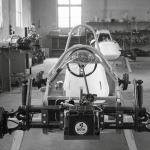 Formula Vau car in raw
Formula Vau car in raw
-
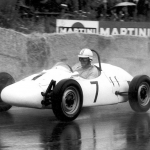 Formula Vau: Grand Prix of the Solitude 1965
Formula Vau: Grand Prix of the Solitude 1965
-
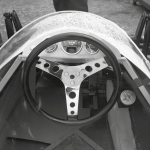 Formula Vau cockpit 1965
Formula Vau cockpit 1965
-
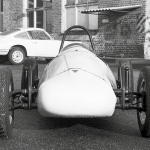 Formula Vau car 1965 in the yard of factory 1 at Porsche (left)
Formula Vau car 1965 in the yard of factory 1 at Porsche (left)
Hubert L. Brundage, unnerved, sold the two prototypes made to date at
a symbolic price of one dollar to Air Force Colonel and SCCA official
George Smith and to William "Bill" Duckworth of Orlando, Florida.
This was considered a gifted mechanic and had its own workshop.
Also driven by the idea of an affordable racing series, both founded
Formcar on West Robinson Avenue 1229 in July 1962. Smith, president of
the new company, used his involvement in the American motorsport
association Sports Car Club of America, SCCA for short, to attract
prospects ,
Duckworth, vice president and product manager, designed a frame and
had the plastic dress made by Don Stuart and George Taylor, also from
Orlando.
It was modeled after the Porsche Formula 2 racing car.
The prototype originated in a small corner in the vehicle repair
workshop of Duckworth.
The other three and thus first "series" vehicles (62-2, 62-3 and 62-4)
followed after extensive testing with the prototype and were sold in
November and December 1962 for $ 2,495 each - and ready to race ,
These first vehicles were completely handcrafted by Duckworth
personally.
The prototype number 62-1 was purchased by Robert C. Smith of Atlantic
Beach, Florida.
Number four still exists and was sold by Woodstock to Germany less
than a year ago.
To allow virtually anyone to get started in motorsport, the young
company finally offered a kit without VW components (engine,
transmission, axles) for only 945 dollars, a complete kit struck just
with 1,995 US dollars to book.
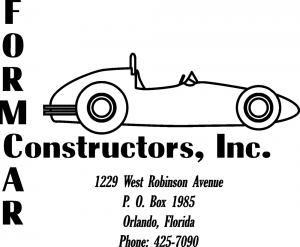 The first three production vehicles had a successful debut on the
Effingham Raceway in Georgia shortly after their completion.
The Vaus started at the end of the field behind racers of the punch
Porsche 356, Triumph TR 3, AustinHealeys 100/4 and 3000 and Sunbeam
Alpines, so vehicles with mostly over 100 hp.
The spectators were amazed when all three Formcars, with their modest
34hp, took the 1st to 3rd place at the end of the race.
From then on, the Formula Vaus always started at events with mixed
starting fields.
The first three production vehicles had a successful debut on the
Effingham Raceway in Georgia shortly after their completion.
The Vaus started at the end of the field behind racers of the punch
Porsche 356, Triumph TR 3, AustinHealeys 100/4 and 3000 and Sunbeam
Alpines, so vehicles with mostly over 100 hp.
The spectators were amazed when all three Formcars, with their modest
34hp, took the 1st to 3rd place at the end of the race.
From then on, the Formula Vaus always started at events with mixed
starting fields.
The first racing success brought the Monoposti to the front page of
the then authoritative Motosport magazine SportsCar - with the result
that Formcar Constructors Inc. was overwhelmed by inquiries so that
Duckworth closed its thriving repair operation and focused entirely on
the construction of racing cars.
Shortly thereafter, he had five employees and the company moved into
larger premises on the Central Avenue.
As a result, twelve outlets have been defined and added to Burgess
Enterprises of Denver, Colorado, as a co-operation partner to
manufacture and sell vehicles for the West Coast.
Orders came in the meantime also from Germany, England, Holland,
France, Sweden, Italy, Austria and Switzerland.
A separate race series was now logical.
With the help of the SCCA a regulation was established and finally the
Formula Vee Racing Association was founded.
From 1964 on, pure Formula Vau races were held in the US.
Now the key data was created, and it got momentum in the new scene.
Porsche brought the first formcars to Europe
The enthusiasm for racing in the USA also caused a sensation in
Europe.
The classic form of motorsport with Monoposti had become increasingly
insignificant, especially in Germany following the withdrawal of
Mercedes-Benz, and very little was done in the 1960s for the junior
racers, Huschke von Hanstein - especially in his role as ONS President
- very worried.
During an America trip in 1964, company boss Ferry Porsche, race
director Huschke von Hanstein and factory rider Edgar Barth convinced
themselves of the appeal of the V-racing cars.
Porsche spontaneously ordered two complete racers from the two leading
brands, a "formcar" and a "beach racing car" to extensively test the
vehicles and to expand the possibilities of a junior racing series in
Germany. Other manufacturers such as Autodynamics of Ray Caldwell and
Beach of Gene Beach, the Lynx Car Company of Bob Riley and John Mills
and zinc by Ed Zink also put Monoposti to the wheels in no time.
Until the year 1966 Formula Vee became the most successful racing
series for Monoposti in the USA.
These races were so popular that even Grand Prix riders took part,
especially Dan Gurney, who even won a race in Florida in 1963.
Even actors like Steve McQueen climbed into the cockpit of the Vaus.
He finished second in the SCCA Divisional Fernandina Beach for touring
cars and GT vehicles on March 3, 1963, supplemented by Monoposti.
The company Formcar was closed after the construction of about 250
vehicles or kits in 1966.
The reason: regulation changes by the Drivers Association have
increased the cost of the monoposti, which was increasingly less the
vision of Bill Duckworth to offer cost-effective monoposti.
In addition, the numerous providers increased the cost pressure.
soldering.
This step is all the more surprising against the background that
Porsche with the model change from 356 to 911 was already at the
capacity limit.
Porsche wanted to import 10 further Renner until the Eberbacher
mountain race on May 15, 1965 in kits (five Formcars and five Beach
Cars) and finish in the factory 1.
Back in Germany was also Hanstein's busiest competitor, the motor
sports journalist Richard von Frankenberg, who was also committed to
promoting young talent.
The first formcar in Germany, which has been owned by the author of
this article for 15 years, even had Porsche wheels in the beginning.
The conversion took place before the first race at the Norisring, as
the regulations specified original VW wheels and brakes.
-
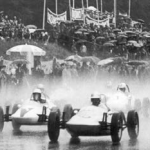 Formula Vau start in the rain 1965
Formula Vau start in the rain 1965
-
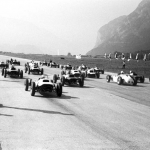 The young formula Vau starts 1965 in Innsbruck.
The young formula Vau starts 1965 in Innsbruck.
-
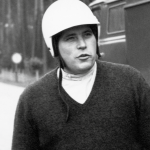 Porsche plant manager Herbert Linge, 1964 as a Formula Vau tester
with it
Porsche plant manager Herbert Linge, 1964 as a Formula Vau tester
with it
-
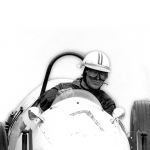 The formula Vau at the Solitude 1965
The formula Vau at the Solitude 1965
To give the junior class a professional appearance, Porsche bought for
each monoposto a VW flatbed type T1, which was painted in the former
Porsche red and left and right on the doors the Porsche logo wore.
All T 1 were supplemented with trailers of the Westfalia brand, also
painted in red.
The VW buses were already in the 50s for the transport of racing cars
of the types 356, 550 and Formula 2 use.
But in turn.
The first test drives with the first two Vau racers took place in
Weissach on the so-called circular orbit through Huschke von Hanstein,
Richard von Frankenberg and plant manager Herbert Linge.
The magazine hobby asked the racing baron after the tests (for the
issue 10/1965, published on May 5, 1965), whether the V-car would be
attractive enough to really attract the kids and whether enthusiastic
sports drivers would not prefer a fast touring car ,
Von Hanstein replied: "No, because it makes a big difference whether
you are traveling with a touring car or with a real monoposto.
And the V-cars are real racing cars.
What they lack in top speed, they replace with good road holding.
They were about as fast as a racing Carrera 904 in tests on the
circular path! "
Even before the debut in Eberbach Porsche presented the first two
Monoposti selected magazines such as auto motor and sport, hobby and
the good ride.
The first year
In 1965, to be precise on May 15, 1965, on the occasion of the
mountain race in Eberbach, the new generation formula was presented to
the public for the first time.
For the press there was already a smaller show at the factory with Eva
Maria Falk, the rally co-driver of Evy Rosqvist.
At the Nürburgring, on the Rossfeld, at the Norisring, in Innsbruck,
Vienna-Aspern, Zandvoort and on the Solitude, the Formula V races had
their European debut.
The lap times made even the last doubters sit up and prove that could
be operated with a relatively inexpensive vehicle real motorsport.
The model chronicle
There were three model lines of formcars.
In 1962, a prototype and three complete vehicles were built under the
name Mark I.
Even the 1963 built vehicles were still delivered as Mark I.
Only in 1964 came the series Mark II, with very few modifications such
as a slightly modified rear end and other rear-view mirrors.
Also the change to the Mark III vehicles starting from 1965 took place
with only slight modifications.
In addition belonged mainly the laterally extended disks as well as
lateral air inlets to the engine.
In the photos of the Porsche armada, these differences can be seen
very nice.
The complete vehicle imported by Ferry Porsche back in 1964 did not
have any lateral air supply and only a small windscreen.
In addition, only in this vehicle, the roll bar was painted in black,
the other five mounted in 1965 vehicles had a rollover protection in
gray.
It is not known that Formcars with 356 engines are said to have
existed.
If there was such a vehicle, this goes back to a private initiative
and has not to do with Porsche itself.
The use of Porsche wheels and Porsche brakes, however, has been used
on early vehicles.
The conversion to VW components had to be made only when pure Vau
races were held according to regulations (in the US from 1964 and in
Germany from 1966).
The first car imported by Ferry Porsche, which was still in its
original state, initially had Porsche wheels mounted, as you can see
on the photos of the first test drives.
To supplement: Porsche 356 Super 90 engines in Vaus were from the
American brand Autodynamics.
Probably nine vehicles were built for the so-called Formula B to 1600
cc, and Porsche itself is said to have bought vehicles and used in
mountain races.
Portrait of William Duckworth
William "Bill" Duckworth is one of those people who have been able to
realize their vision during their lifetime.
He Dreamed Of An Affordable Racing Series With Monoposti Race Cars.
He Is The Father Of The Success Class Formula Vau.
William was born in 1912 in Orlando, the son of a judge.
Even as a young boy he was fascinated by technology, built his first
vehicle as a teenager and made the streets of Orlando uncertain.
The vehicle was so quick that the local police officer "Bulldog" with
his Harley-Davidson had no chance to catch the little Bill in
Flagranti.
He finally lurked him at home.
Bill then set aside his motorsport ambitions and
opened a repair shop for automobiles on Edgewater Drive in Orlando as
a young man.
In 1936 he married the farmer's daughter Barbara Cheney. For
Bill the time had come to tackle his motorsport activities
more calmly and orderly. The family moved to the foreground,
and they had two daughters and a son. In the mid-50s, Barbara
and he took part in various rallies.
Gradually, various
mountain races were
added, which were still considered to be family-friendly due
to the long waiting times. In
1961 finally his dream formed when he saw the Nardi Formula
Junior for the first time. From then on, He was
done with waiting.
After William Duckworth had realized his dream with the formcar, the visionary retired
from the racing circus at 53 years old .
He died in August 1991 at age 79.
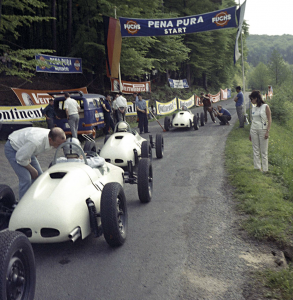
Stylish appearance Eberbach 1965 with Porsche Bulli-Renn Transporter
for Beach and Formcar racecars.
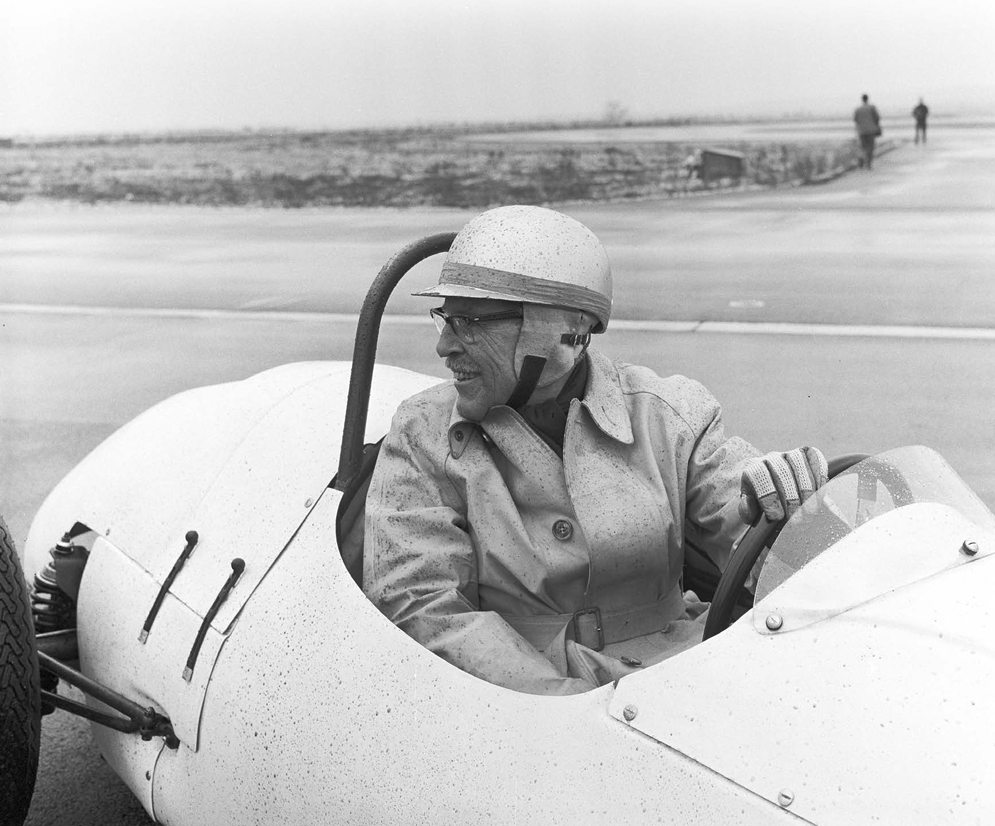




 The first three production vehicles had a successful debut on the
Effingham Raceway in Georgia shortly after their completion.
The Vaus started at the end of the field behind racers of the punch
Porsche 356, Triumph TR 3, AustinHealeys 100/4 and 3000 and Sunbeam
Alpines, so vehicles with mostly over 100 hp.
The spectators were amazed when all three Formcars, with their modest
34hp, took the 1st to 3rd place at the end of the race.
From then on, the Formula Vaus always started at events with mixed
starting fields.
The first three production vehicles had a successful debut on the
Effingham Raceway in Georgia shortly after their completion.
The Vaus started at the end of the field behind racers of the punch
Porsche 356, Triumph TR 3, AustinHealeys 100/4 and 3000 and Sunbeam
Alpines, so vehicles with mostly over 100 hp.
The spectators were amazed when all three Formcars, with their modest
34hp, took the 1st to 3rd place at the end of the race.
From then on, the Formula Vaus always started at events with mixed
starting fields. 



